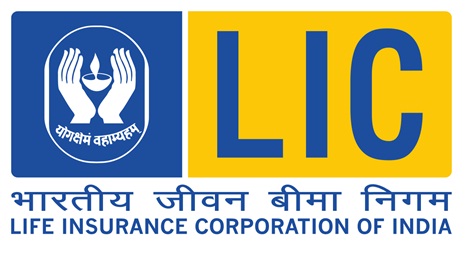Earlier we says for Insurance nowadays we also add Insurance with Tax Savings. Mostly people invest for tax saving purpose. And before taking any insurance plan peoples ask how much tax benefit they may get!
Here highlighting some LIC Plans with tax benefit as per Income Tax Act.
1) Deductions Under Section 80C
(i) Life insurance premium paid in order to effect or to keep in force an insurance policy on the life of the assessee or on the life of the spouse or any child of assesee and in the case of HUF, Premium paid on the life of any member thereof under an insurance policy, (Other than a contact for a deferred annuity) issued on or before the 31st day of March 2012 shall be eligible for "deduction only to the extent of 20% of the actual capital sum assured or actual premium paid whichever is less."
And issued on or after the 1st day of April 2012 shall be eligible for "deduction only to the extent of 10% of the actual capital Sum Assured or Actual Premium paid whichever is less".
Where the policy, issued on or after the 1st day of April 2013, is for insurance on life of any person, who is -
(a)a person with disability or a person with sever disability (Section 80U)
(b) Suffering from disease or ailment as specified in the rules under section 80DDB.
(ii) Contribution to deferred annuity plans in order to effect or to keep in force a contract for deferred annuity, on his own life or the life of his spouse or any child of such individual, provided such contract does not contain a provision to exercise an option by the insured to receive a cash payment in lieu of the payment of annuity is eligible for deduction.
(iii) Contribution to Annuity Plans like - New Jeevan Dhara, New Jeevan Dhara -I and Jeevan Akshaya -VI.
Under Section 80CCC
New Jeevan Nidhi Plan & New Jeevan Suraksha - I Plan :- A deduction to an individual for any amount paid or deposited by him from his taxable income in the above annuity plans for receiving pension is allowed.
*The aggregate amount of deductions under U/S 80C, 80CCC & 80CCD (1) shall not in any case exceed Rs.1,50,000/- (Rupees One Lakh Fifty Thousand)*
2) Deductions Under Section 80D
a) Deduction allowable upto Rs.25,000/- if an amount is paid to keep in force an insurance on health of assessee or his family (i.e Spouse & Dependent children) or any contribution made to the central Government Health Scheme or such other scheme as may be notified by the Central Government in this behalf or on account of Preventive health check-up of the assessee or his family.
b) Additional deduction upto Rs.25,000/- if an amount is paid to deep in force an insurance on health of parents or on account of Preventive health checkup of the parent of the assessee, whether dependent or not.
(c) In case of HUF, deduction allowable upto Rs.25,000/- if an amount is paid to deep in force an insurance on health of any member of that HUF.
(d) If the sum specified in (a) or (b) or (c) is paid to effect or keep in force an insurance on the any person specified therein who is a senior citizen, then the deduction available will be up to Rs.30,000/-. Here senior citizen means the person who is of sixty year or more during the previous year.
(e) In case the amount are paid in (a) or (b) or (c) on account of preventive health check up, the deduction for such amounts shall be allowed to the extent it does not exceed in aggregate Rs.5,000/-
(f) For the purpose of deduction, the payment shall be made by - any mode, including cash, In respect of any sum paid on account of preventive health check up and Any mode other than cash in all other cases.
(g) the insurance as mentioned above shall be in accordance with the scheme framed by (i) the GIC of India or any other insurer approved by IRDA.
3) Deductions Under Section 80DD
Jeevan Aadhar Plan - Deduction from total income upto Rs.75,000/- allowable on amount deposited with LIC under Jeevan Aadhar Plan, Jeevan Vishwas for maintenance of an handicapped dependent (Rs.1,25,000/- where handicapped dependent is suffering from severe disability)
4) Exemption in respect of commutation of Pension under Jeevan Suraksha & Jeevan Nidhi Plans :
Under Section 10(10A)(iii) of the Income Tax Act, any payment received by way of commutation of pension out of the Jeevan Suraksha & Jeevan Nidhi Annuity Plans is exempt from Tax.
5) Income Tax Exemption on Maturity / Death Claims proceeds under section 10(10D) :
As per Section 10(10D) of the Income Tax Act, 1961, any sum received under a Life Insurance Policy, Including the sum allocated by way of Bonus on such policy is exempt from tax where the sum s received as a death benefit. However, to get exemption under above section for sum received other than death benefit.
* Policy shall not be issued under Section 80DD(3) Or
* Policy shall not be issued as Keyman Insurance Policy Or
* Policy which has been issued on or after April 1, 2003 and the premium paid in any of the years during the term of the policy not exceeding 20% of the Actual Capital Sum Assured.
* Policy which has been issued on or after April 1, 2012 and the premium paid in any of the years during the term of the policy not exceeding 10% of the Actual Capital Sum Assured.
Where the policy issued on or after the 1st day of April 2013 is for insurance on life of any person, who is -
(i) a person with disability or a person with severe disability as referred to in section 80U, or
(ii) Suffering from disease or ailment as specified in the rules made under section 80DDB,
*Exemption under this section shall be available only if the premium payable in any of the years is not more than 15% of the actual Capital Sum Assured.*














